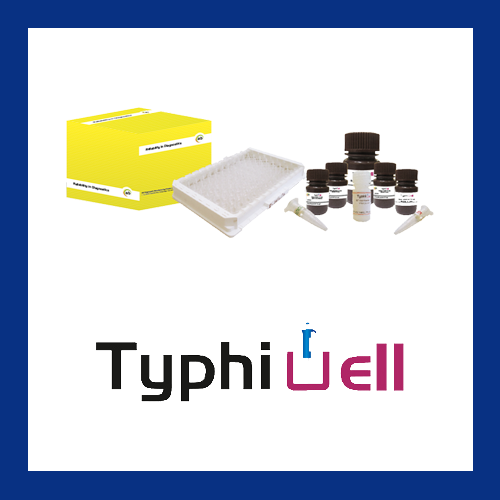


An Enzyme – Linked Immunosorbent Assay (ELISA) for the detection of IgM antibodies specific to Salmonella typhi in human serum/plasma
The microwells are coated with specific typhoid antigen. Diluted patients serum, after removal of human IgG interference and rheumatoid factor, is added to the microwell. IgM specific antibody, if present,binds to the antigen. All unbound materials are washed away during washing step before anti human hrp conjugated is added to the antigen – antibody complexes, if present. The whole complex were then visualised by adding a chromogen (Tetramethylbenzidine or TMB). Addition of Stop Solution ends the reaction and turns the blue colour to bright yellow colour. The reaction will then be read by an ELISA reader.
Typhoid fever is endemic in Asia-Pacific region, the Indian Sub continental, Africa and South America. WHO has estimated 22 million new cases worldwide with about 200,000 deaths. Typhoid is an infectious disease caused by bacteria called Salmonella typhi. The sources of infectious agent are human carriers and it is transmitted by faecal-oral route when food or water contaminated with infected faeces is ingested. In endemic area, due to reinfection, the secondary immune response will boost the IgG concentration compared to IgM, thus results in false negative IgM results.